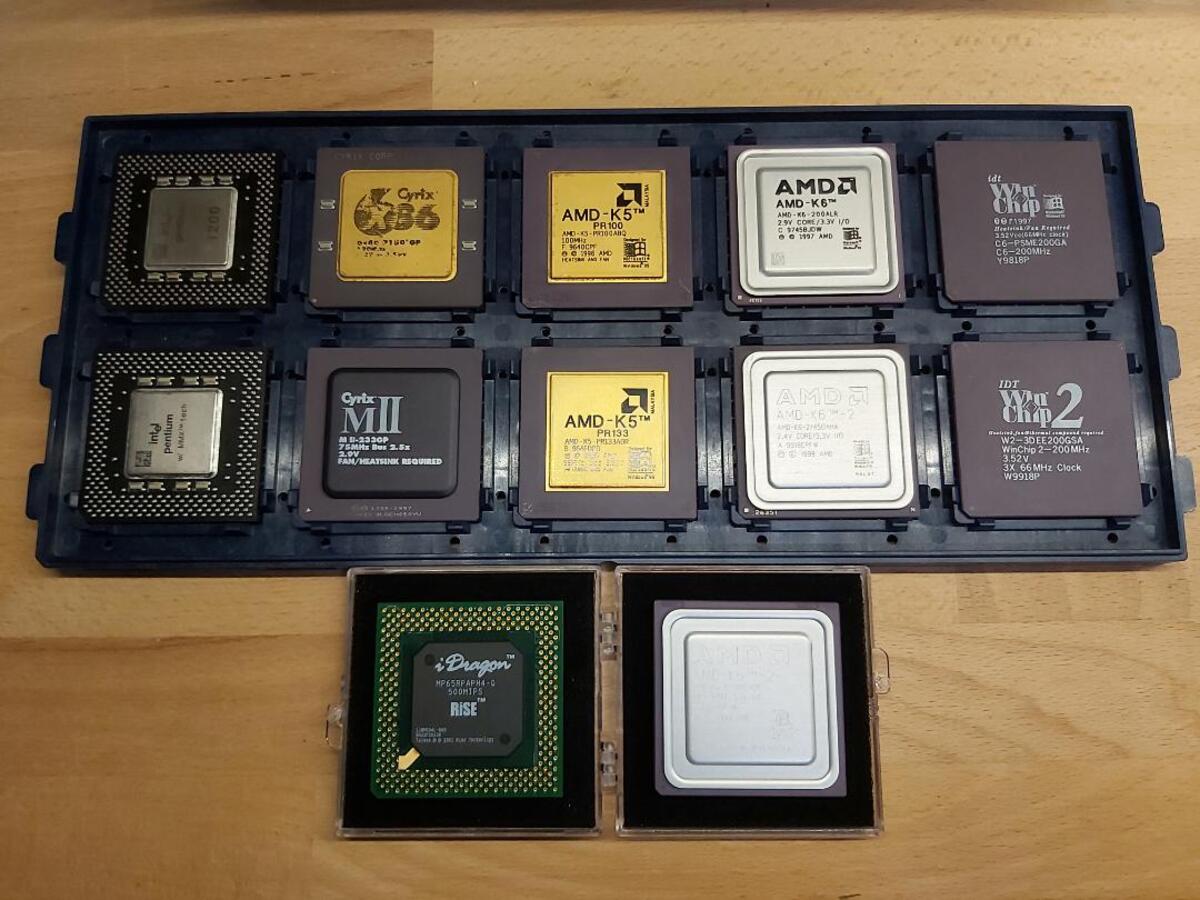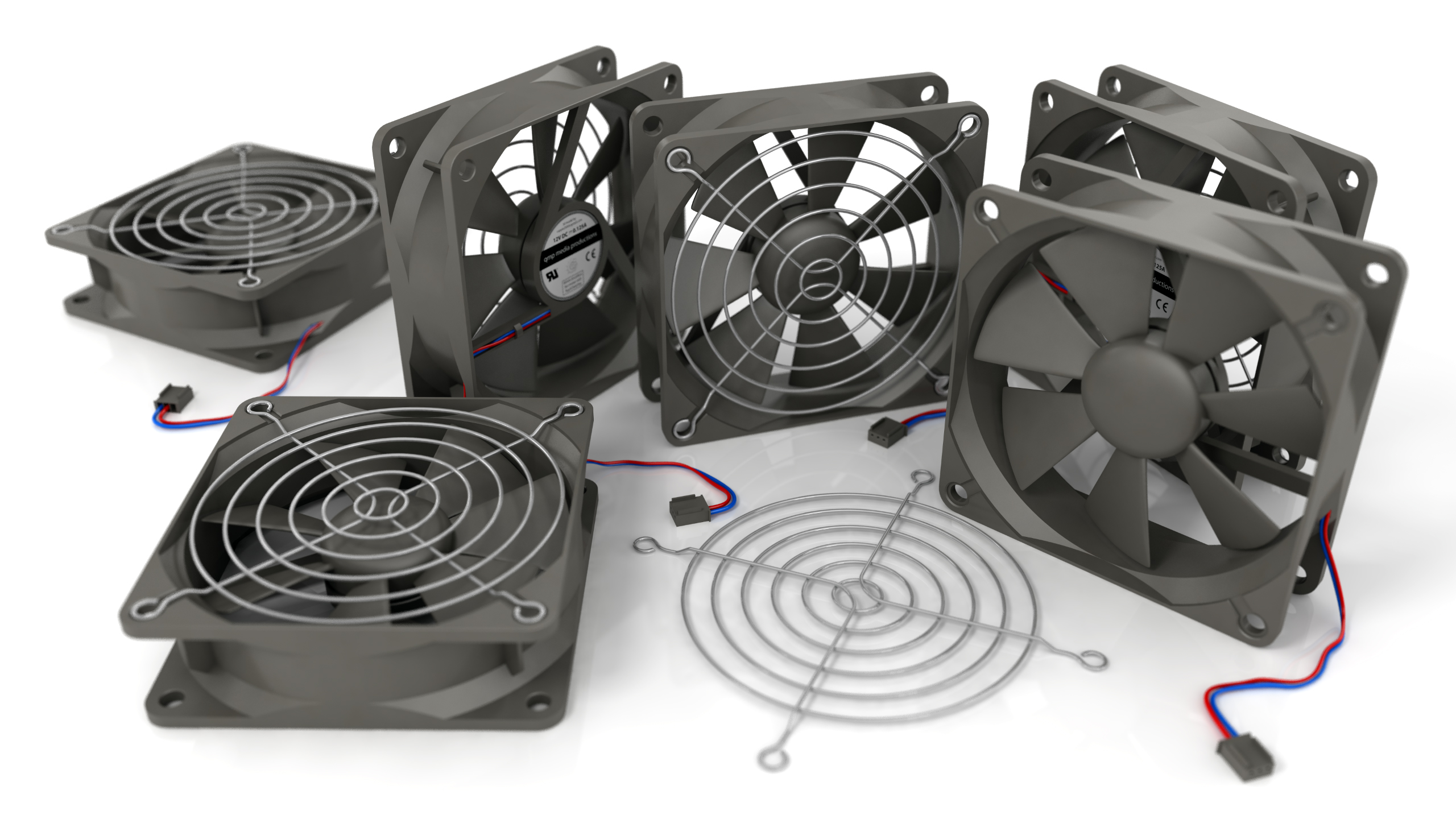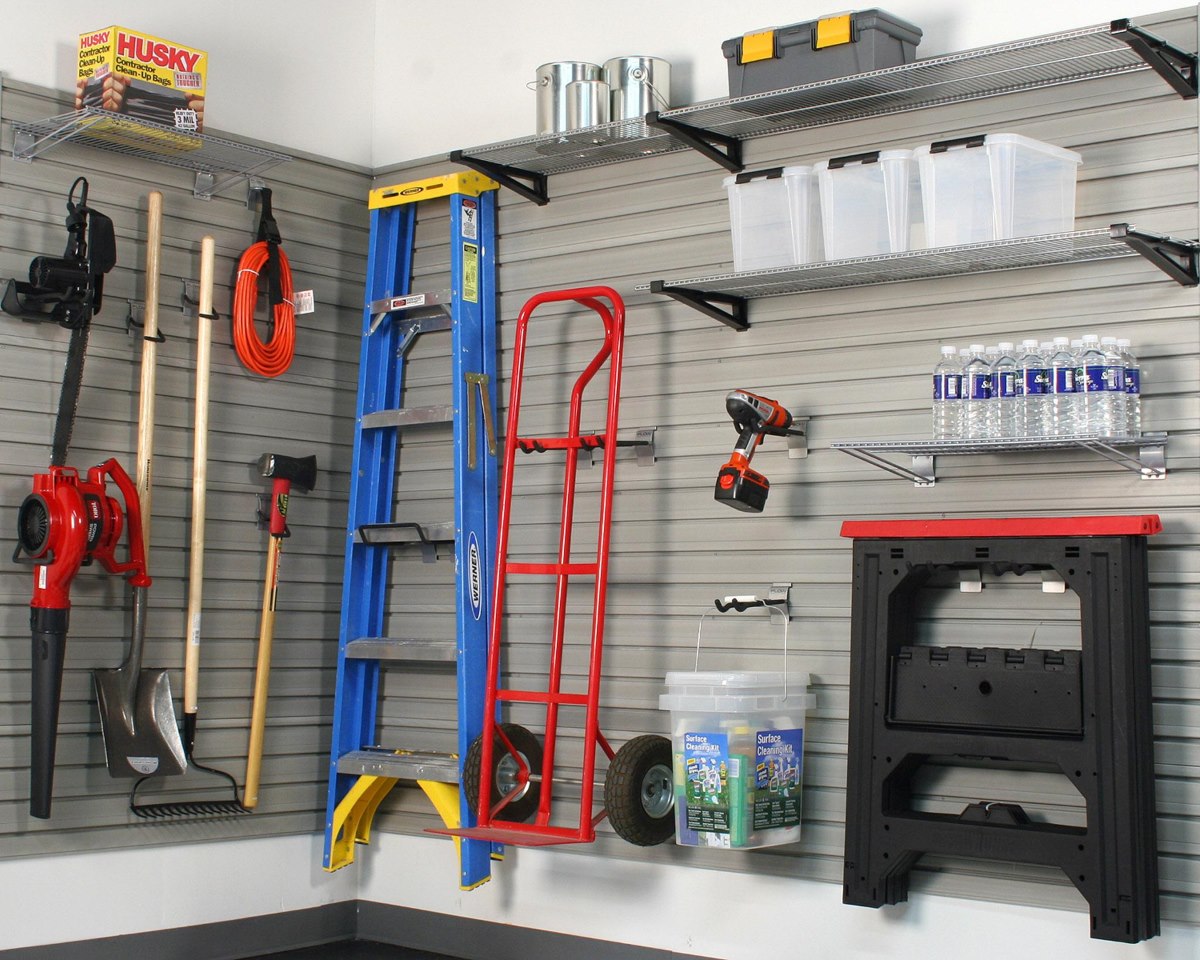

Articles
How To Store CPU
Modified: January 6, 2024
Learn how to properly store CPU and other computer hardware components with these helpful articles.
(Many of the links in this article redirect to a specific reviewed product. Your purchase of these products through affiliate links helps to generate commission for Storables.com, at no extra cost. Learn more)
Introduction
Storing a CPU properly is essential for its longevity and performance. Whether you are upgrading your computer or need to store a spare CPU, taking the right precautions can help protect your valuable hardware. In this article, we will guide you through the necessary steps to store a CPU safely and ensure its optimum condition when you are ready to use it again.
When it comes to storing a CPU, there are several factors to consider. This includes preparing for storage, choosing the right storage container, cleaning the CPU, packaging it securely, selecting an appropriate storage location, and performing periodic maintenance. By following these steps, you can protect your CPU from potential damage and ensure its functionality when you need it again.
So let’s dive into the details and learn how to store a CPU properly.
Key Takeaways:
- Properly storing your CPU involves crucial steps such as preparing for storage, choosing the right container, removing and cleaning the CPU, packaging it securely, selecting an ideal storage location, and performing periodic maintenance. Following these steps ensures the CPU’s longevity and functionality.
- To store your CPU safely, handle it with care, protect it from static electricity, choose an appropriate storage container, clean it thoroughly, package it securely, select an ideal storage location, and perform regular maintenance checks. These measures safeguard your CPU and ensure its readiness for future use.
Read more: What Is a CPU Fan
Step 1: Preparing for CPU Storage
Before you start the process of storing your CPU, it is important to take some necessary preparations to ensure its safety during the storage period.
- Backup your data: Before removing the CPU from your computer, make sure to back up all your important data. This will ensure that you don’t lose any valuable information in case of any accidental damage during the storage process.
- Disconnect from power: Before handling any computer components, always make sure to turn off the power and unplug the computer from the electrical outlet. This will protect you from any potential electrical hazards.
- Ground yourself: Static electricity can damage sensitive electronic components, including the CPU. To prevent this, it is important to ground yourself before handling the CPU. You can do this by touching a grounded metal surface or by using an anti-static wrist strap.
- Gather necessary tools: Before you start the process, gather the necessary tools such as a screwdriver, thermal paste remover, and cleaning materials. These tools will help you safely remove and clean the CPU.
By taking these preparatory steps, you will ensure that you are ready to safely store your CPU without any unnecessary risks.
Step 2: Choosing the Storage Container
Choosing the right storage container is crucial to protect your CPU from dust, moisture, and physical damage. Here are some factors to consider when selecting a suitable storage container:
- Airtightness: Opt for a container that provides airtight sealing to prevent dust and moisture from entering. This will help maintain the integrity of the CPU and protect it from corrosion and oxidation.
- Anti-static properties: Look for a storage container that has anti-static properties. This will prevent any potential electrostatic discharge that can damage sensitive electronic components like the CPU.
- Cushioning material: Find a container that has adequate cushioning material to absorb shocks and protect the CPU from physical damage. This can be in the form of foam inserts or anti-static bubble wrap.
- Size and interior space: Ensure that the container is spacious enough to accommodate the CPU comfortably. It should also allow for additional padding to secure the CPU properly without any risk of movement.
One option is to use an anti-static bag specifically designed for storing computer components. These bags are made of anti-static material and provide excellent protection against dust and electrostatic discharge. Place the CPU inside the bag, ensuring that no pins or connectors are squeezed or bent during the process.
Alternatively, you can use a plastic or metal container with an airtight seal, adding a layer of anti-static foam or bubble wrap inside for protection. Make sure the container is clean and free from any dust or contaminants before placing the CPU inside.
By choosing the right storage container, you can effectively safeguard your CPU from potential damage and prolong its lifespan.
Step 3: Removing the CPU from the Motherboard
Before you store your CPU, you need to carefully remove it from the motherboard. Here’s how to do it:
- Gather necessary tools: To safely remove the CPU, you’ll need a screwdriver, thermal paste remover, and isopropyl alcohol or cleaning solution.
- Power down your computer: Make sure your computer is turned off and unplugged from the power source.
- Remove the CPU cooler: If your CPU has a cooler attached, such as a heat sink or liquid cooling unit, you’ll need to remove it first. Use a screwdriver to loosen and remove any screws or clips holding the cooler in place.
- Unlock the CPU socket: Locate the CPU socket on the motherboard and carefully unlock it. The method for doing this may vary depending on the socket type, so refer to the motherboard’s manual for instructions specific to your model.
- Remove the CPU: Gently lift the CPU straight up from the socket. Avoid applying any lateral force or twisting motion, as this can damage the CPU pins or the socket.
- Clean the CPU: Once the CPU is removed, use a thermal paste remover or isopropyl alcohol to clean off any residual thermal paste from the surface of the CPU. Apply the cleaning solution to a lint-free cloth or cotton swab and gently wipe the surface until it is clean.
- Inspect for damage: Take a close look at the CPU pins and socket for any signs of damage. Bent pins or signs of burning may indicate a problem. If you notice any issues, it’s best to consult a professional before storing the CPU.
By following these steps, you can safely remove the CPU from the motherboard without causing any damage. Ensure that you handle the CPU with care and store it in a secure place until you’re ready to use it again.
Step 4: Cleaning the CPU
Properly cleaning the CPU before storage is essential to remove any dust, debris, or residue that can affect its performance. Follow these steps to clean your CPU:
- Prepare cleaning materials: Gather isopropyl alcohol or a specialized cleaning solution for electronic components, a lint-free cloth or cotton swabs, and compressed air canister.
- Clean the top surface: Apply a small amount of cleaning solution to the cloth or cotton swab. Gently wipe the top surface of the CPU, being careful not to apply excessive pressure. Remove any visible residue or smudges, ensuring that the surface is clean and dry before proceeding.
- Clean the contact surface: Flip the CPU over and inspect the contacts. If there is any debris or residue, use the cloth or cotton swab with cleaning solution to gently clean the contacts. Make sure to remove any particles that may hinder proper contact when the CPU is reinstalled in the future.
- Use compressed air: If there are any difficult-to-reach areas or small particles stuck in crevices, you can use a canister of compressed air to blow them away. Be careful not to shake the canister excessively or tilt it at an angle that may release liquid propellant.
- Avoid touching the CPU pins: It’s important to minimize any contact with the CPU pins, as they are delicate and can be easily bent. Handle the CPU by its edges and avoid touching the pins as much as possible.
Remember, a clean and dust-free CPU will ensure optimal performance and protect it from potential issues when you reinstall it. Take your time and be gentle during the cleaning process to avoid causing any damage.
When storing a CPU, it’s important to keep it in a safe and dry place to prevent any damage from moisture or static electricity. It’s also a good idea to store it in its original packaging or an anti-static bag to protect it from any potential harm.
Read more: How to Replace a CPU Fan
Step 5: Packaging the CPU
Proper packaging is crucial to ensure the safety and protection of your CPU during storage. Follow these steps to package your CPU securely:
- Choose an anti-static bag: Place your cleaned CPU inside an anti-static bag. These bags are designed to prevent electrostatic discharge and protect sensitive electronic components, like the CPU, from potential damage.
- Seal the bag: Ensure the anti-static bag is properly sealed to maintain its protective properties. Some bags come with a built-in adhesive strip, while others require using an anti-static tape or twist tie to secure the opening. Make sure the bag is tightly sealed to prevent dust or moisture from entering.
- Add extra protection: For an additional layer of protection, you can wrap the sealed anti-static bag with bubble wrap or foam padding. This will provide cushioning and prevent any potential shocks or impact during storage.
- Label the package: It’s a good practice to label the package with the CPU model and any relevant information for easy identification later. This will help you locate and retrieve the specific CPU without any confusion when you need it.
- Place in a sturdy container: Once the CPU is securely packaged, place it in the storage container you have chosen. Ensure that the container is clean and free from any dust or contaminants. Arrange the CPU package in a way that minimizes any movement or jostling during storage.
By packaging your CPU properly, you will protect it from dust, moisture, and accidental damage. This will ensure its longevity and enable you to retrieve it in perfect condition when it’s time to use it again.
Step 6: Choosing the Storage Location
The storage location you choose for your CPU is important to ensure its safety and longevity. Here are some considerations when selecting the ideal storage location:
- Avoid extreme temperatures: Choose a storage location that has a stable, moderate temperature. Extreme heat or cold can damage the CPU and affect its performance. Avoid areas near windows, direct sunlight, or sources of heat or cold, such as radiators or air conditioning units.
- Control humidity levels: High humidity can cause moisture buildup, leading to corrosion and damage to the CPU. Opt for a storage location with moderate humidity levels. If the humidity tends to be high, consider using moisture-absorbing packs or a dehumidifier to maintain a dry environment.
- Shield from light exposure: Protect the CPU from prolonged exposure to light, especially UV rays. Light can degrade the CPU over time. Choose a storage location where the CPU is shielded from direct light or cover it with a light-blocking material, such as a cloth or paper.
- Minimize vibrations: Vibrations can impact delicate electronic components. Find a storage location where the CPU is less likely to be subjected to continuous vibrations, such as on top of a sturdy shelf away from heavy machinery or foot traffic areas.
- Keep away from dust and debris: Dust and debris can accumulate over time and impact the performance of the CPU. Choose a storage location that is relatively clean and free from dust. Consider placing the CPU in a closed cabinet or using a dust cover to further protect it.
By considering these factors, you can choose a suitable storage location that provides a stable and protected environment for your CPU. This will ensure its longevity and maintain its performance during the storage period.
Step 7: Storing the CPU Safely
Now that you have prepared your CPU for storage and selected the ideal storage location, it’s time to safely store the CPU to ensure its protection. Follow these steps:
- Place the packaged CPU inside the storage container: Carefully place the packaged CPU inside the chosen storage container. Ensure that it fits properly and there is no excess movement that could potentially damage the CPU during storage.
- Secure the storage container: Seal the storage container tightly to prevent dust, moisture, and other external factors from entering. Use any securing mechanisms or fasteners provided with the container, such as latches, locks, or adhesive strips, to ensure a proper seal.
- Store the container in the selected location: Place the securely sealed storage container in the previously chosen storage location. Ensure that it is positioned safely to prevent accidental falls or damage.
- Keep the storage environment consistent: Maintain a stable environmental condition in the storage area. Avoid sudden changes in temperature, humidity, or exposure to light. Regularly monitor the storage conditions to ensure they remain within the desired range.
- Avoid frequent movement: Minimize handling or moving the storage container unless necessary. Excessive movement can increase the risk of accidental damage to the CPU. If you need to transport the CPU to a different location, take appropriate precautions to ensure its safety during transit.
By following these steps, you can safely store your CPU and protect it from potential damage. Remember to periodically check the storage conditions and perform any necessary maintenance to ensure the CPU remains in optimal condition for future use.
Step 8: Periodic Maintenance and Check-ups
Periodic maintenance and check-ups are essential to ensure the longevity and functionality of your stored CPU. Follow these guidelines to keep your CPU in good condition:
- Regular inspections: Periodically inspect the storage container and its surroundings for any signs of damage or potential issues. Check for any leaks, condensation, or environmental changes that may affect the CPU.
- Cleanliness: Keep the storage area clean and free from dust and debris. Regularly dust the storage container and its surroundings to prevent any accumulation of particles that could affect the CPU.
- Monitor environmental conditions: Continuously monitor the temperature and humidity levels in the storage area. Make adjustments as necessary to maintain the recommended range and prevent any adverse effects on the CPU.
- Check for damage: Periodically inspect the CPU for any signs of physical damage, such as bent pins or discoloration. If you notice any issues, consult a professional for evaluation and assistance.
- Periodic testing: Occasionally, consider testing the CPU to ensure its functionality. Connect the CPU to a compatible motherboard and perform a basic test to check if it is working properly. This will give you peace of mind and allow you to take any necessary actions if any issues arise.
- Update storage environment: If you notice a significant change in the storage environment, such as a sudden increase in humidity or exposure to extreme temperatures, take immediate steps to rectify the situation. Adjust the storage conditions or consider relocating the CPU to a more suitable environment.
By incorporating these periodic maintenance and check-up practices, you can ensure that your stored CPU remains in optimal condition. This will increase the chances of a smooth transition when you need to use the CPU again and prolong its overall lifespan.
Read also: 9 Best Cpu Cooling Fan for 2025
Conclusion
Properly storing your CPU is crucial for preserving its performance and extending its lifespan. By following the steps outlined in this article, you can ensure that your CPU remains safe and protected during the storage period.
From preparing for storage to choosing the right storage container, removing and cleaning the CPU, packaging it securely, selecting the ideal storage location, storing it safely, and performing periodic maintenance, each step plays a vital role in maintaining the integrity of your CPU.
Remember to handle the CPU with care, take precautions against static electricity, and keep it clean from dust and debris. Use anti-static bags, cushioning materials, and secure storage containers to provide the necessary protection. Choose a storage location with stable temperature and humidity levels, free from excessive light exposure and vibrations.
Periodically inspect and maintain the storage environment, ensuring the CPU remains in optimal condition. This includes regular cleanliness checks, monitoring environmental conditions, and conducting periodic tests to confirm the CPU’s functionality.
By following these guidelines, you can rest assured that your stored CPU will be ready for use whenever you need it, without any issues or performance degradation.
Remember, proper storage of your CPU not only protects your valuable hardware investment but also ensures a smooth experience when you eventually reinstall it into your computer system.
So, take the necessary steps to store your CPU correctly and enjoy the peace of mind that comes with knowing your CPU is safely stored and ready for future use!
Frequently Asked Questions about How To Store CPU
Was this page helpful?
At Storables.com, we guarantee accurate and reliable information. Our content, validated by Expert Board Contributors, is crafted following stringent Editorial Policies. We're committed to providing you with well-researched, expert-backed insights for all your informational needs.














0 thoughts on “How To Store CPU”